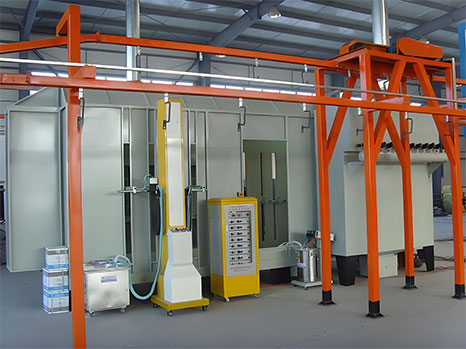
In the field of automotive manufacturing, automatic painting equipment has achieved full-process automation. This automation covers the entire process from the application of primer to the application of topcoat on the car body.Robotic spraying systems are integrated with electrostatic spraying technology. This integration enables the utilization rate of paint to reach more than 90%. In comparison with manual spraying methods, this integration leads to a reduction in paint waste by 30%.
There is data provided by an automobile manufacturer. The data indicates that after the adoption of an automated painting line, changes have occurred. The painting time required for a single car body has been shortened to 8 minutes. Meanwhile, the deviation in coating thickness has been controlled within the range of ±2μm. These changes have brought about significant improvements. Specifically, the corrosion resistance of the car body has been notably enhanced. Additionally, the appearance quality of the car body has also been significantly improved.
In the home appliance industry, automatic painting equipment is widely used in the coating of outer shells of refrigerators, washing machines, etc. Through the collaboration of reciprocating sprayers and infrared drying systems, rapid switching of coatings of different colors can be achieved to meet the needs of personalized customization. At the same time, the closed painting workshop combined with waste gas treatment devices reduces VOCs emissions by 60%, complying with the requirements of new environmental protection regulations.
The coating of steel structures and aluminum profiles in the building materials field is also increasingly dependent on automated equipment. The gantry-type automatic sprayer can continuously coat profiles up to 12 meters long. Laser positioning ensures coating uniformity, and the pass rate of adhesion tests has increased from 75% in manual coating to 99%, greatly reducing rework costs.
In the domain of 3C products, precision coating operations serve as a key showcase. They effectively highlight the high-precision advantages inherent in the associated equipment.When it comes to the coating process of mobile phone shells, specific equipment configurations are employed. Six-axis robots, which are equipped with micro-spray valves, form the core of this setup. These robot systems possess a notable capability. They can achieve uniform coating within narrow-edge areas that measure 0.5mm in width.Moreover, the coating thickness in such operations is subject to strict control. It is maintained within the range of 5-8μm. This level of precision in coating meets two critical sets of requirements. On one hand, it satisfies the appearance demands of electronic products. On the other hand, it also fulfills the protection needs that these electronic products necessitate.
The following are the main application industries and their proportions of automatic painting equipment:
| Application Industry | Market Share | Core Advantages |
| Automotive Manufacturing | 42% | Efficient mass production, uniform coating |
| Home Appliance Industry | 23% | Fast color switching, compliance with environmental standards |
| Building Materials Field | 18% | Large-area coating, high adhesion |
| 3C Products | 12% | Precision coating, micro-area operation |
| Other Industries | 5% | Customized coating needs |
From the data, automotive manufacturing remains the main market for automatic painting equipment. With the development of new energy vehicles and smart homes, the demand for such equipment will continue to grow. In the future, automatic painting systems combined with AI visual inspection will further improve the stability of painting quality, providing strong support for the high-quality development of the manufacturing industry.
